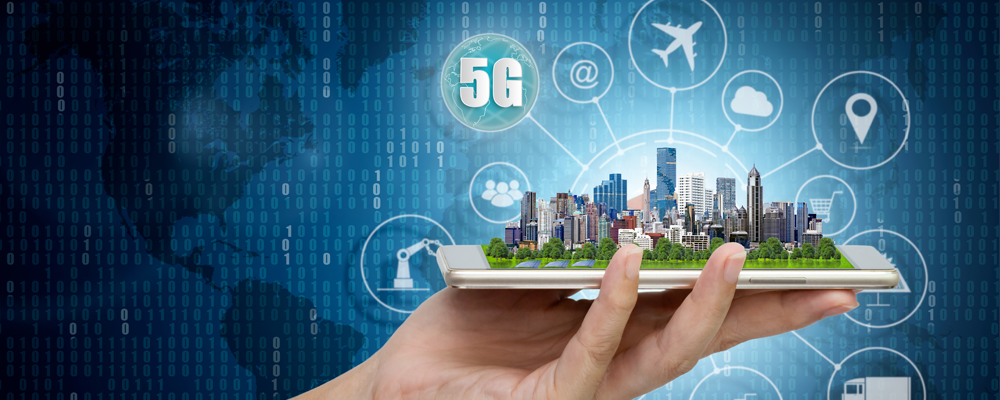Unlocking the Potential of 5G
In today’s hyper-connected world, the evolution of technology is relentless, constantly pushing the boundaries of what is possible. At the forefront of this digital revolution stands 5G, the fifth generation of cellular networks poised to revolutionize connectivity as we know it. With promises of lightning-fast speeds, ultra-low latency, and unprecedented reliability, 5G has the potential to transform industries, redefine communication, and propel society into a new era of innovation.

Understanding the Fundamentals of 5G
At its core, 5G is much more than just an incremental upgrade from its predecessors. Unlike 4G LTE, which primarily focused on enhancing mobile broadband services, 5G represents a paradigm shift in network architecture, designed to accommodate a diverse range of applications beyond traditional smartphones and tablets. Leveraging advanced technologies such as millimeter-wave spectrum, massive MIMO (Multiple Input, Multiple Output), and network slicing, 5G promises to deliver multi-gigabit speeds, near-instantaneous response times, and seamless connectivity for billions of devices simultaneously.
Breaking Down the Three Main Components of 5G
- Enhanced Mobile Broadband (eMBB) At its most basic level, 5G’s enhanced mobile broadband capability aims to provide users with significantly faster download and upload speeds compared to previous generations. By leveraging higher frequency bands, wider channel bandwidths, and advanced antenna technologies, eMBB enables users to stream high-definition video, download large files, and engage in immersive gaming experiences with minimal latency.
- Ultra-Reliable Low-Latency Communication (URLLC) One of the most compelling aspects of 5G is its ability to support ultra-reliable, low-latency communication, making it ideal for applications that require real-time responsiveness and mission-critical reliability. Whether it’s autonomous vehicles, remote surgery, or industrial automation, URLLC ensures that data is transmitted with minimal delay and maximum reliability, enabling a wide range of innovative use cases that were previously impractical or impossible.
- Massive Machine Type Communication (mMTC) In addition to serving human-centric communication needs, 5G also caters to the burgeoning Internet of Things (IoT) ecosystem through massive machine type communication. By optimizing network resources and supporting a vast number of low-power, low-cost devices, mMTC enables seamless connectivity for smart cities, industrial IoT deployments, and smart home automation, paving the way for a more interconnected and intelligent world.
Exploring the Potential Applications of 5G
The transformative potential of 5G extends far beyond faster download speeds and smoother streaming experiences. Across various industries, from healthcare and transportation to manufacturing and entertainment, 5G is poised to unleash a wave of innovation, driving efficiency, productivity, and economic growth on a global scale.
Healthcare
In the healthcare sector, 5G holds the promise of revolutionizing patient care through telemedicine, remote monitoring, and surgical robotics. With high-speed, low-latency connectivity, doctors can perform remote consultations, monitor patients in real time, and even conduct complex surgeries from thousands of miles away, improving access to healthcare services and saving lives in the process.
Transportation
In the realm of transportation, 5G has the potential to accelerate the development and deployment of autonomous vehicles, ushering in a new era of mobility that is safer, more efficient, and environmentally sustainable. By providing vehicles with real-time data on road conditions, traffic patterns, and pedestrian movements, 5G networks can enhance situational awareness and enable seamless communication between vehicles, infrastructure, and other road users, ultimately reducing accidents and congestion on our roads.
Manufacturing
In the manufacturing sector, 5G-powered IoT solutions are poised to revolutionize the way factories operate, enabling greater automation, flexibility, and efficiency in production processes. With 5G connectivity, machines can communicate with each other in real time, enabling predictive maintenance, adaptive manufacturing, and just-in-time inventory management, thereby reducing downtime, optimizing resource utilization, and driving cost savings for manufacturers.
Entertainment
In the realm of entertainment, 5G is set to transform the way we consume and interact with digital content, unlocking new opportunities for immersive experiences and personalized entertainment offerings. Whether it’s augmented reality (AR) experiences, virtual reality (VR) gaming, or ultra-high-definition streaming, 5G networks can deliver bandwidth-intensive content with minimal latency, enabling users to enjoy seamless, high-quality entertainment experiences anytime, anywhere.
Conclusion: Embracing the 5G Revolution
As we stand on the brink of the 5G era, the possibilities are truly limitless. From powering smart cities and intelligent transportation systems to revolutionizing healthcare and entertainment, 5G has the potential to reshape entire industries, drive innovation, and improve the quality of life for people around the world. As businesses, governments, and consumers alike embrace this transformative technology, we are poised to embark on a journey of connectivity, creativity, and progress unlike anything we’ve ever seen before.